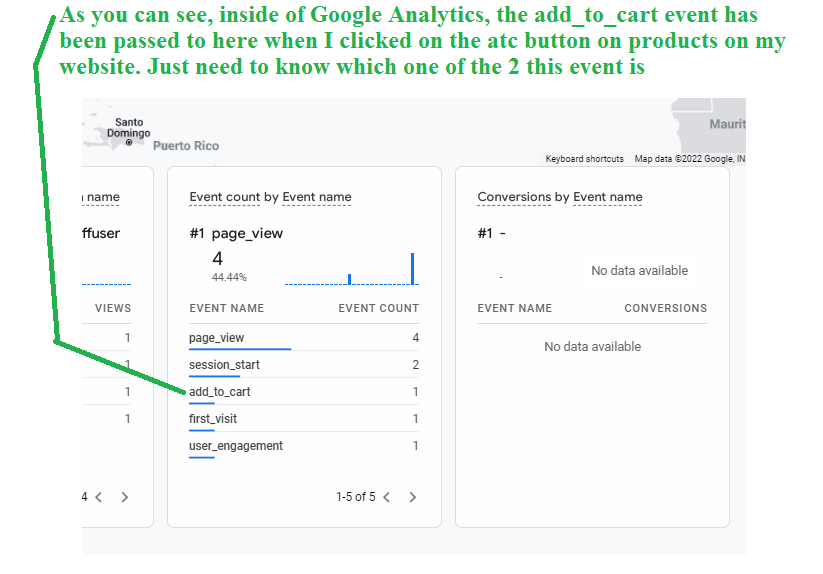Enhancing Your Projects with Remarketing In Google Analytics
Enhancing Your Projects with Remarketing In Google Analytics
Blog Article
Taking Advantage Of Remarketing in Google Analytics: A Comprehensive Overview
Using remarketing in Google Analytics uses businesses a strategic side in reaching out to potential clients. This overview will lose light on the crucial steps involved in using the full possibility of remarketing in Google Analytics, leading to improved advertising and marketing outcomes.
Understanding Remarketing in Google Analytics
Remarketing in Google Analytics permits companies to purposefully target individuals that have formerly interacted with their website or mobile application. By leveraging data from Google Analytics, services can create personalized remarketing listings based upon individual actions, such as pages checked out, actions taken, or certain objectives achieved. This effective tool enables organizations to re-engage with individuals who have revealed passion in their services or products, eventually raising the probability of conversion.
Recognizing the various kinds of remarketing methods is critical for an effective campaign - What Is “Remarketing” In Google Analytics?. Google Analytics provides various alternatives, consisting of typical remarketing, dynamic remarketing, and remarketing lists for search advertisements (RLSA) Each kind serves a distinct objective and can be customized to fulfill certain advertising and marketing goals
Additionally, assessing the efficiency of remarketing campaigns is necessary for enhancing results. Google Analytics supplies important understandings into the effectiveness of various remarketing strategies, allowing businesses to make data-driven choices and refine their targeting method. By constantly readjusting and monitoring remarketing initiatives based on analytics data, companies can make the most of ROI and drive success in their marketing initiatives.
Setting Up Remarketing Campaigns

After establishing up audience checklists, the following step is to link Google Analytics with Google Ads. By linking these 2 platforms, organizations can effortlessly transfer target market lists from Google Analytics to Google Ads for remarketing objectives. This assimilation allows for even more exact targeting and far better project efficiency.
As soon as the accounts are connected, organizations can create remarketing projects in Google Ads using the target market notes formerly defined in Google Analytics. These projects can be customized with particular advertisement creatives, messaging, and bidding process methods to successfully re-engage with past visitors and drive conversions. By adhering to these steps, services can utilize the power of remarketing to improve their marketing efforts and raise ROI.
Using Target Market Division Techniques
Predefined sections in Google Analytics allow you to promptly assess typical target market classifications fresh individuals, returning customers, or customers who completed a particular objective on your site. Customized sections, on the various other hand, enable you to create one-of-a-kind sections based upon particular standards that are necessary to your organization objectives. Dynamic remarketing lists automatically readjust based on customer behavior, revealing personalized ads to individuals that have actually engaged with your website in particular methods.
Studying Remarketing Performance Metrics
Upon examining the efficiency of remarketing campaigns in Google Analytics, the evaluation of key efficiency metrics offers valuable understandings into audience engagement and conversion rates. By delving right into metrics such as click-through prices (CTR), conversion rates, price per acquisition (CERTIFIED PUBLIC ACCOUNTANT), and return on ad spend (ROAS), marketers can gauge the success of their remarketing efforts. Analyzing these metrics makes it possible for online marketers to optimize projects, fine-tune audience targeting, and allocate spending plans effectively to enhance total remarketing performance.
Maximizing Remarketing Strategies
When refining remarketing approaches in Google Analytics, concentrating on audience division is vital for achieving campaign success. By splitting your audience right into details sectors based on their actions, demographics, or interests, you can tailor your ads much more properly to each group. This targeted the original source technique raises the likelihood of engaging individuals that have actually currently revealed passion in your product and services, causing greater conversion prices.
Another essential facet of maximizing remarketing strategies is continuously testing and refining your projects (What Is “Remarketing” In Google Analytics?). A/B screening various advertisement creatives, messaging, or offers can assist you recognize what reverberates ideal with your audience and drives the most conversions. By examining the efficiency of these examinations in Google Analytics, you can make data-driven choices to enhance your remarketing initiatives additionally
Moreover, leveraging vibrant remarketing can dramatically improve your project results. This function enables you to show customized ads to individuals based on their past communications with your website, showcasing services or items they have actually formerly checked out. By providing customized material to individuals based upon their actions and rate of interests, vibrant remarketing can assist enhance involvement and drive conversions.
Conclusion
In conclusion, harnessing remarketing in Google Analytics is a critical approach to target users who have actually previously engaged with a web site. By producing personalized audience checklists and utilizing audience segmentation techniques, businesses can maximize remarketing campaigns for boosted conversion rates. Analyzing efficiency metrics and continuously maximizing approaches are important for making best use of the efficiency of remarketing efforts.
Google Analytics uses various choices, consisting of common remarketing, vibrant remarketing, and remarketing listings for search advertisements (RLSA)After establishing up audience checklists, the next step is to connect Google Analytics with Google Ads. By connecting these two systems, services can perfectly move audience checklists from Google Analytics to Google Ads for remarketing purposes.When the accounts are linked, services can create remarketing campaigns in Google Advertisements utilizing the audience details previously specified in Google Analytics.When refining remarketing approaches in Google Analytics, concentrating on target market segmentation is vital for attaining project success.
Report this page